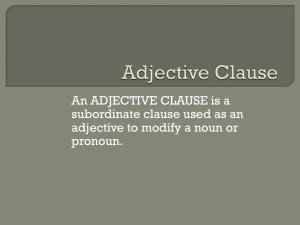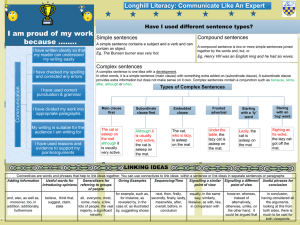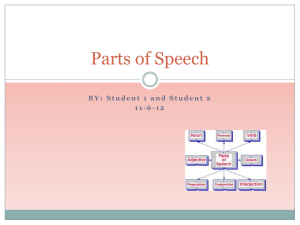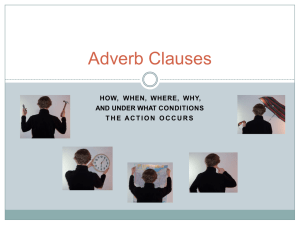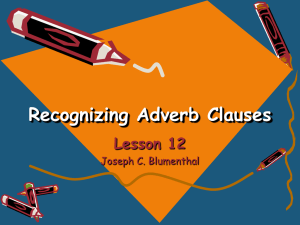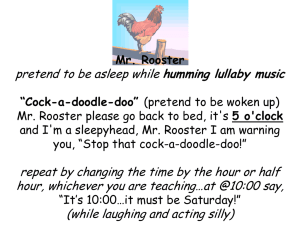Adverbial Clauses
advertisement
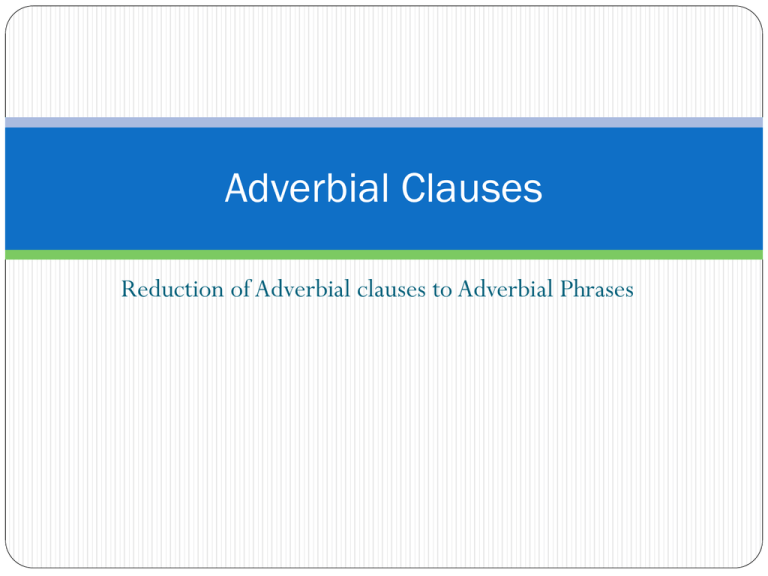
Adverbial Clauses Reduction of Adverbial clauses to Adverbial Phrases Reduced Adverb Clauses You can reduce adverb clauses to present participial phrases (-ing phrases) and past participial phrases Step 1: Make sure that the subject of the adverb clause and the subject of the independent clause are the same: While Dan was watching the news, he learned about an earthquake in China. Because Mary was bored, she fell asleep in class. Step 2: Delete the subject of the adverb clause. If necessary, move it to the subject position in the independent clause: While Dan was watching the news, he learned about an earthquake in China. While Dan was watching the news, he Dan learned about an earthquake in China. Because Mary was bored, she fell asleep in class. Because Mary was bored, she fell asleep in class. Step 3: Delete the helper verb of the adverb clause. While was watching the news, he Dan learned about an earthquake in China. Because was bored, she fell asleep in class. New Sentence: While watching the news, Dan learned about an earthquake in China. Because bored, she fell asleep in class. Step 4: Delete or retain the subordinator according to the following rules: Retain before and since when they refer to time. Delete as when it is a time subordinator. Delete because, since, and as when they act as reason subordinators. Because Bored, she fell asleep in class. Delete after, while, and when if the participial phrase comes before the independent clause, for example While Watching the news, Dan learned about an earthquake in China. Retain after, while, and when if the adverbial clause follows the independent clause, for example Dan learned about an earthquake in China while watching the news. Step 5: Re-read your sentence once you have reduced the adverbial clause to a phrase to make sure that its meaning is clear.


